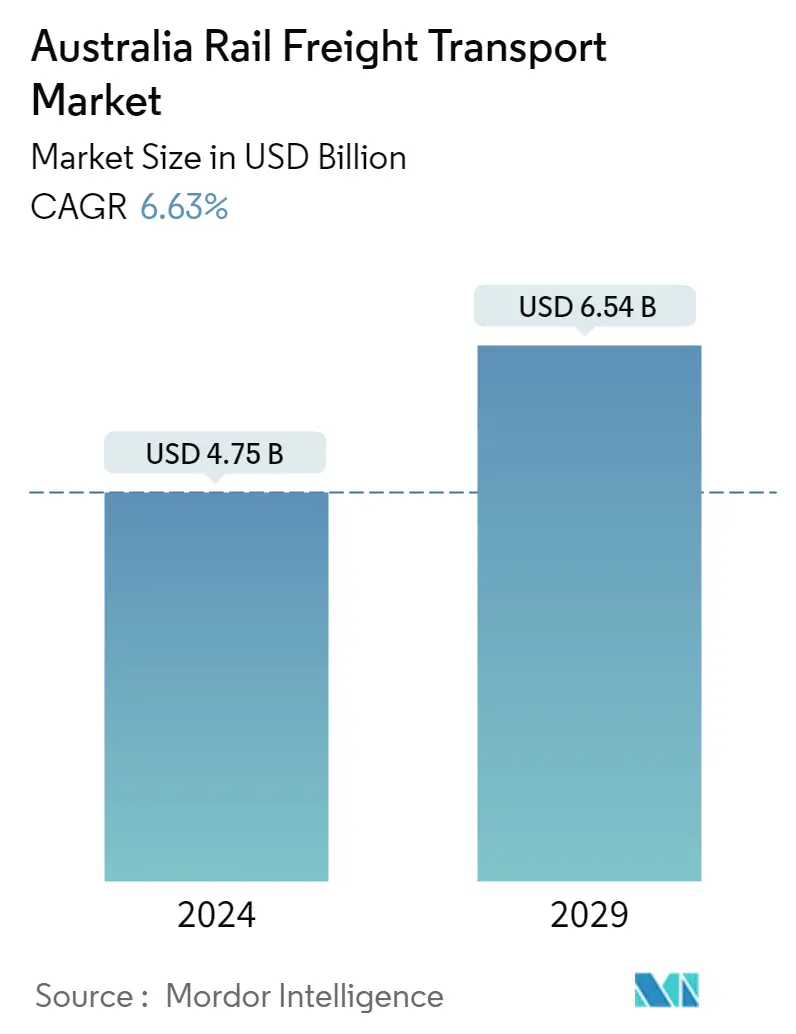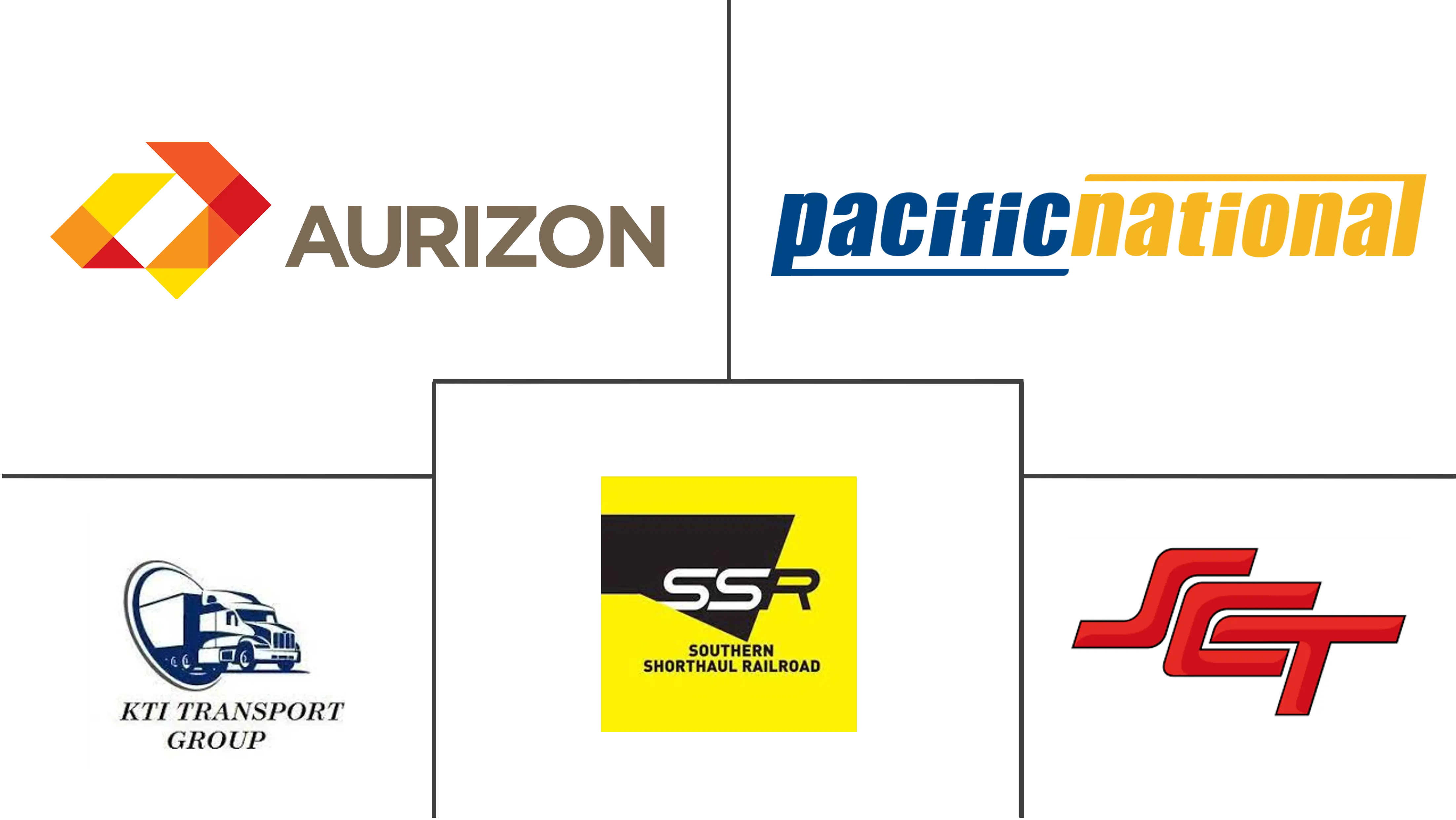Market Size of Australia Rail Freight Transport Industry

| Study Period | 2020 - 2029 |
| Base Year For Estimation | 2023 |
| Market Size (2024) | USD 4.75 Billion |
| Market Size (2029) | USD 6.54 Billion |
| CAGR (2024 - 2029) | 6.63 % |
| Market Concentration | Low |
Major Players
*Disclaimer: Major Players sorted in no particular order |
Need a report that reflects how COVID-19 has impacted this market and its growth?
Australia Rail Freight Transport Market Analysis
The Australia Rail Freight Transport Market size is estimated at USD 4.75 billion in 2024, and is expected to reach USD 6.54 billion by 2029, growing at a CAGR of 6.63% during the forecast period (2024-2029).
Considering the vastness of the nation, Australian freight supply networks are often extensive and diverse.
- A supply chain, in its simplest form, is the web of people, businesses, goods, and services that collects raw materials converts them into finished goods and carries them to their destination. Producers, transporters, customs officers, traders, and inspectors are just a few of the many actors on which they rely. Transporting freight from farms, mines, cities, and ports to domestic and foreign markets will be made simpler by Rail transport.
- Freight forwarders frequently base their decisions on availability and cost when deciding whether to convey freight by road or rail. For the Inland Rail Service Offering, it is crucial that new intermodal terminals are built in Melbourne and Brisbane with enough room to accommodate double-stacked, high-performance trains. In order to complete the development and operation of the Melbourne and Brisbane intermodal freight terminals in time for the start of Rail's full operations, the National Intermodal Corporation will collaborate with the Commonwealth, State Governments, the Australian Rail Track Corporation (ARTC), and industry.
- Economic growth and signals for private sector investment must be supported by investments in Australia's freight-related infrastructure. With the help of the USD 44 million Inland Rail Interface Improvement Program, project ideas are being developed for more efficient supply chains based on rail and upgrades to intersecting national rail lines. In order to implement priority infrastructure projects under the Infrastructure Investment Program, the Australian Government provided USD 150 million in the 2022-23 Budget, building on the success of the II Program.
- Over 80% of Australia's rail freight is exported iron ore and coal, making rail the country's primary carrier of goods and accounting for about 49% of all domestic freight. The Transcontinental Rail Line, which connects the Eastern coastline with the West coast, is one of the largest freight trains in the world. It travels across Australia's immense landmass.
- Australian suppliers of rail technology, equipment, and solutions are open to considering opportunities to collaborate with and represent U.S. businesses because significant investment in Australia's freight and passenger rail infrastructure is expected to continue. In Australia, rail is a USD 26 billion contributor to the national economy and a leader in productivity, innovation, and best practises globally. Some of the heaviest and longest freight trains in the world travel on Australia's heavy haul railways.
